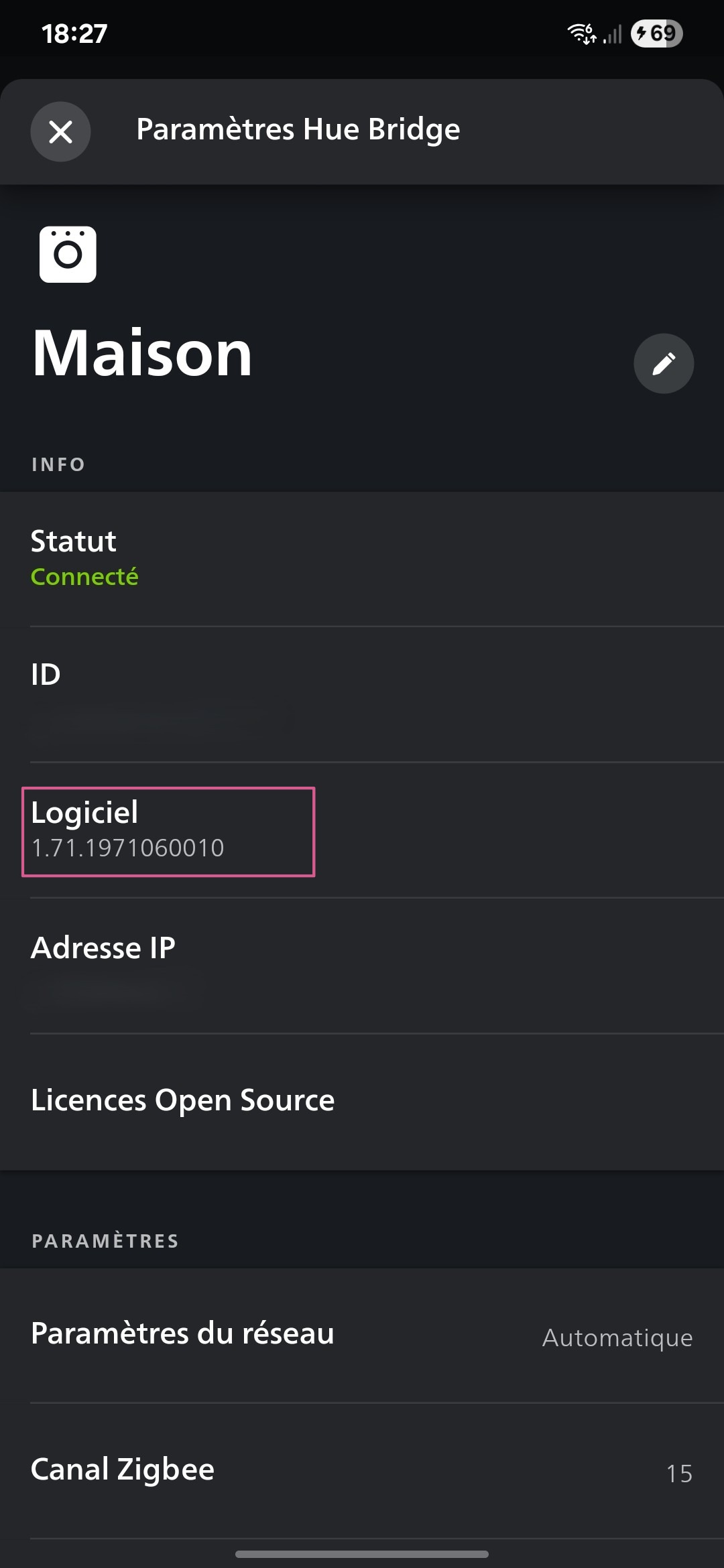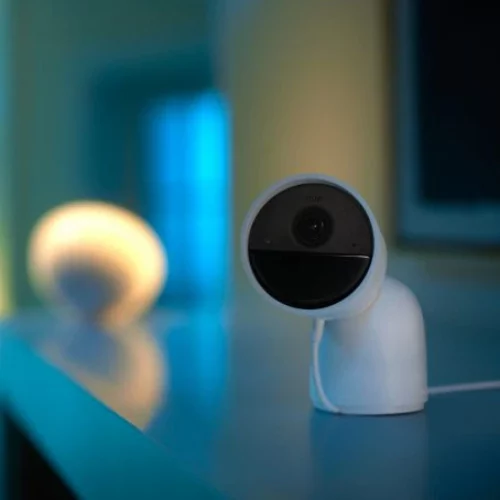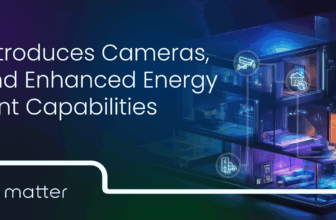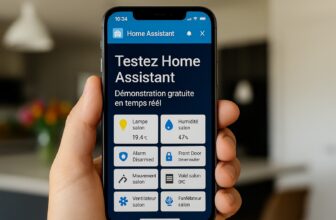Philips Hue, the undisputed leader in smart lighting, continues its commitment by rolling out discreet yet crucial updates that enhance security around its central connection bridge. At the same time, the brand is expanding its features to integrate cameras as smart triggers for lighting systems, providing an even more integrated and secure experience for users. These developments demonstrate Signify’s intention, the owner of Philips Hue, to build an increasingly robust and intuitive smart home ecosystem.
Strengthening the security of the Philips Hue bridge: a strategic firmware update
The Philips Hue bridge, the true heart of the connected lighting system, orchestrates communication between bulbs, sensors, and the cloud platform. For nearly a decade, the second generation of the Hue bridge has been a reliable foundation for numerous smart home installations around the world. However, in the face of growing threats related to the security of connected objects, Signify made a decisive choice by implementing an important firmware update, now being deployed.

This update, identified under version 1971060010, primarily aims to eliminate self-signed certificates that were previously used by the bridge. They are replaced by authenticated HTTPS certificates that comply with current standards for data protection and encrypted communication. This change, although almost invisible to the end user, represents a crucial advancement for securing exchanges between the bridge, peripheral devices, and Philips Hue cloud services.

For users, checking the firmware version is simple: just navigate to the bridge settings in the Philips Hue app. This transparency ensures that their devices benefit from the latest protections, thus reducing the risks of intrusions and interception of personal data.
At a time when attacks on IoT systems are multiplying, this strengthening cannot be underestimated. Previous models of bridges have sometimes been criticized for vulnerabilities to tampering if the update was not applied. With this update, Philips Hue firmly places itself in the category of reliable solutions, reassuring users about the confidentiality of their information and the security of their connected environment.
This decision to reinforce security at the software level is part of a broader policy of regular evolutions. Indeed, Philips Hue has not only consolidated its software infrastructure; it is also continuing to simplify and enhance the ergonomics of its application to provide a smooth and accessible experience, even for the less tech-savvy. This dual dynamic – increased security and ease of use – is essential to democratizing the use of connected homes, a rapidly growing sector.
Real impacts on user security and data
The integration of authenticated HTTPS certificates translates into more robust encrypted communication, making it nearly impossible to intercept data between the bridge and the cloud servers. This data can include usage histories, programmed scenarios, or even specific user settings. Such a level of security is aligned with the necessity to protect not only privacy but also to prevent any attempt at remote takeover of the connected home.
This update is also a strong signal sent to IT security professionals, who are closely monitoring the developments in the IoT sector. It confirms that manufacturers, especially those with a strong presence in the consumer market, are taking cybersecurity issues into account within their ecosystem.
Activating Philips Hue lights via cameras: a new era in secure home automation
The latest version of the Philips Hue app (v5.43) introduces an innovative feature that transforms the way cameras interact with lighting. Until now, most automatic lighting setups relied on dedicated motion sensors. Now, Philips Hue allows motion detection to be used directly from security cameras to trigger groups of bulbs.

This evolution demonstrates a deeper integration between security devices and lighting, leveraging the versatility of the Hue Secure HD 1080p cameras, available in wired or wireless versions for indoor or outdoor use. This ability to use cameras as lighting triggers eliminates the need to install multiple motion detectors while offering better coverage and increased protection against intrusions.
The typical outdoor use is particularly compelling: the camera detects suspicious movement, immediately activating the exterior lighting, which can deter an intruder or simply illuminate the way for a family member returning home. For installations already equipped with Hue cameras, this functional gain is an obvious advantage, reducing costs and installation complexity.
Users installing these new features in their homes can benefit from smart automation tailored to their specific needs. For example, a parent can program a scenario where the light turns on automatically at the entrance when the child arrives home from school, detected by the camera outside. Similarly, in case of an unexpected motion alert during the night, the exterior light turns on to deter any burglary attempts.
This system can also serve more practical purposes, such as lighting when exiting the garage, where simply passing in front of the camera automatically triggers the porch light, eliminating darkness and enhancing safety by minimizing blind spots.
However, for precise management of outdoor lighting, it is still recommended to continue associating cameras with Philips Hue motion sensors. The latter remain more reliable for certain specific triggers, particularly for fine-tuning light animations in varied spaces such as the garden or driveway. Cameras provide a complementary function that optimizes the entire monitoring and lighting system.
This new use of cameras fits into a broader trend of convergence of connected devices, where video, alerts, and illumination are no longer separate entities but a coherent and collaborative system. This level of interaction enriches smart home scenarios, allowing for the integration of push notifications with instant lighting triggers.
Towards an increasingly connected and intelligent Hue ecosystem
Subsequent updates to Philips Hue demonstrate a constant ambition to improve the robustness, user-friendliness, and complementarity of smart home devices. By 2025, the Hue ecosystem will no longer be limited to a simple lighting system: it will become a central platform integrating security, well-being, and comfort through a range of smart connected objects.
The key role of the Hue bridge in this growing architecture requires maintaining heightened vigilance regarding security aspects, as well as ensuring the ease of integration of new features. The deployment of authenticated HTTPS certificates is a milestone among others that ensure technological longevity.
At the same time, the ability of Hue Secure cameras to natively interact with lighting offers a glimpse of the smart home of tomorrow, where each device works in concert, triggers contextually, and anticipates the needs of its occupants. This synergy between security and lighting paves the way for innovations such as embedded artificial intelligence, capable of adapting scenarios based on habits and external context for optimal automation.
The progression towards a completely intuitive smart home management will also underscore the importance of open standards and secure protocols to enable smooth interoperability between different brands and technological realms, a major issue for industry stakeholders.
As the Philips Hue offering continues to evolve in this direction, users find themselves at the heart of a transformed relationship with their home, a connected, secure, and adaptive place that brings safety and comfort in perfect harmony.







Please remain courteous: a hello and a thank you cost nothing! We're here to exchange ideas in a constructive way. Trolls will be deleted.